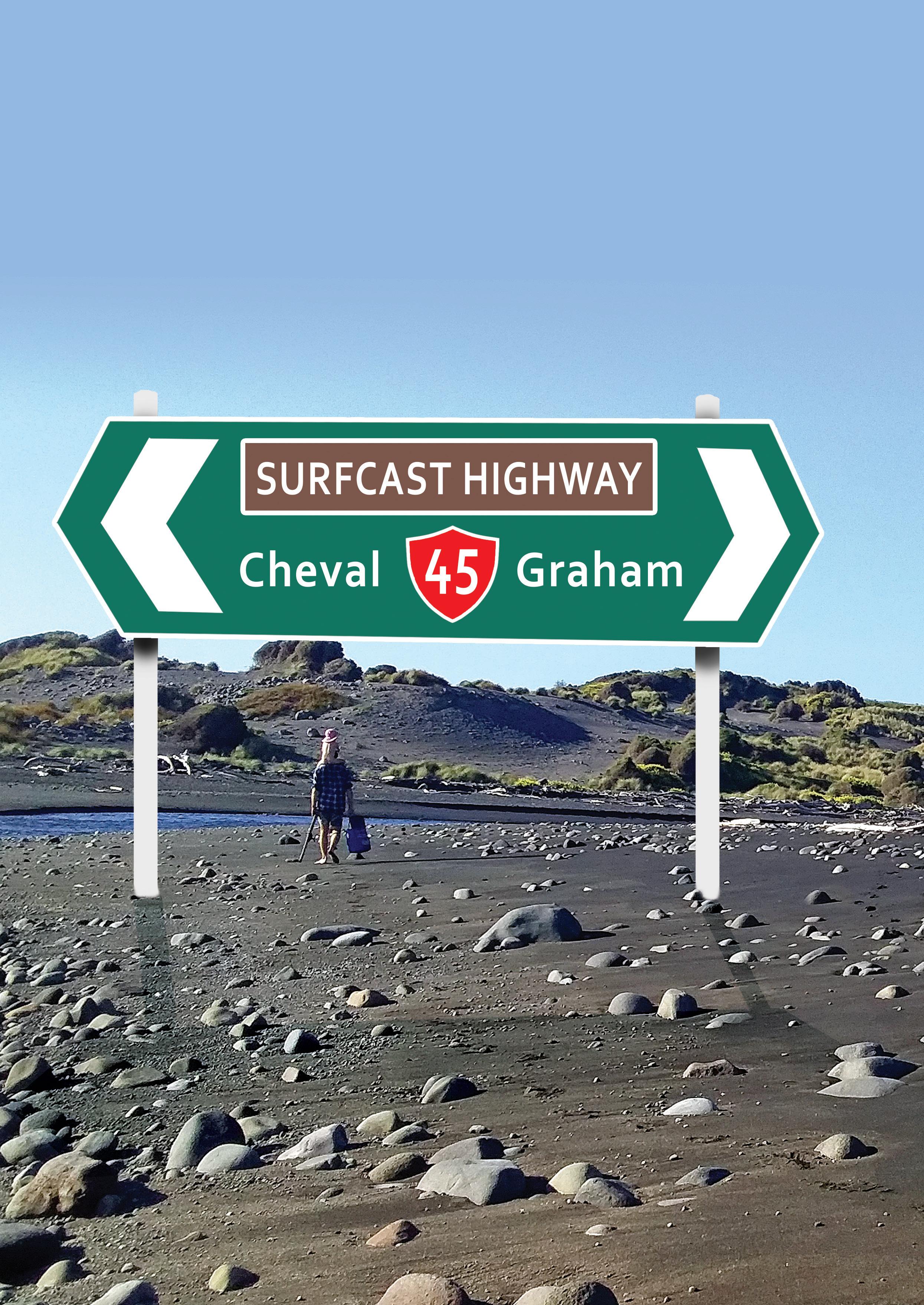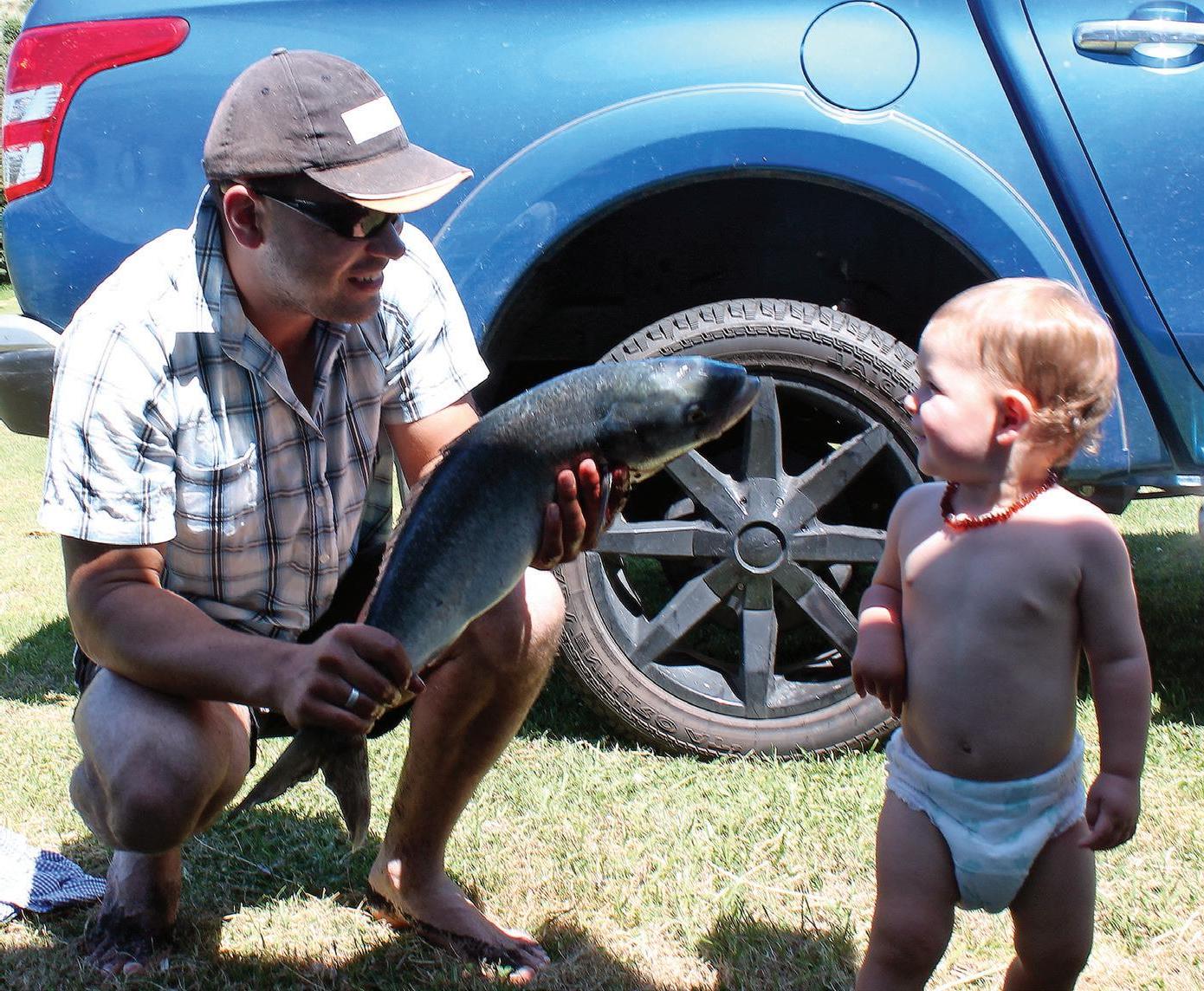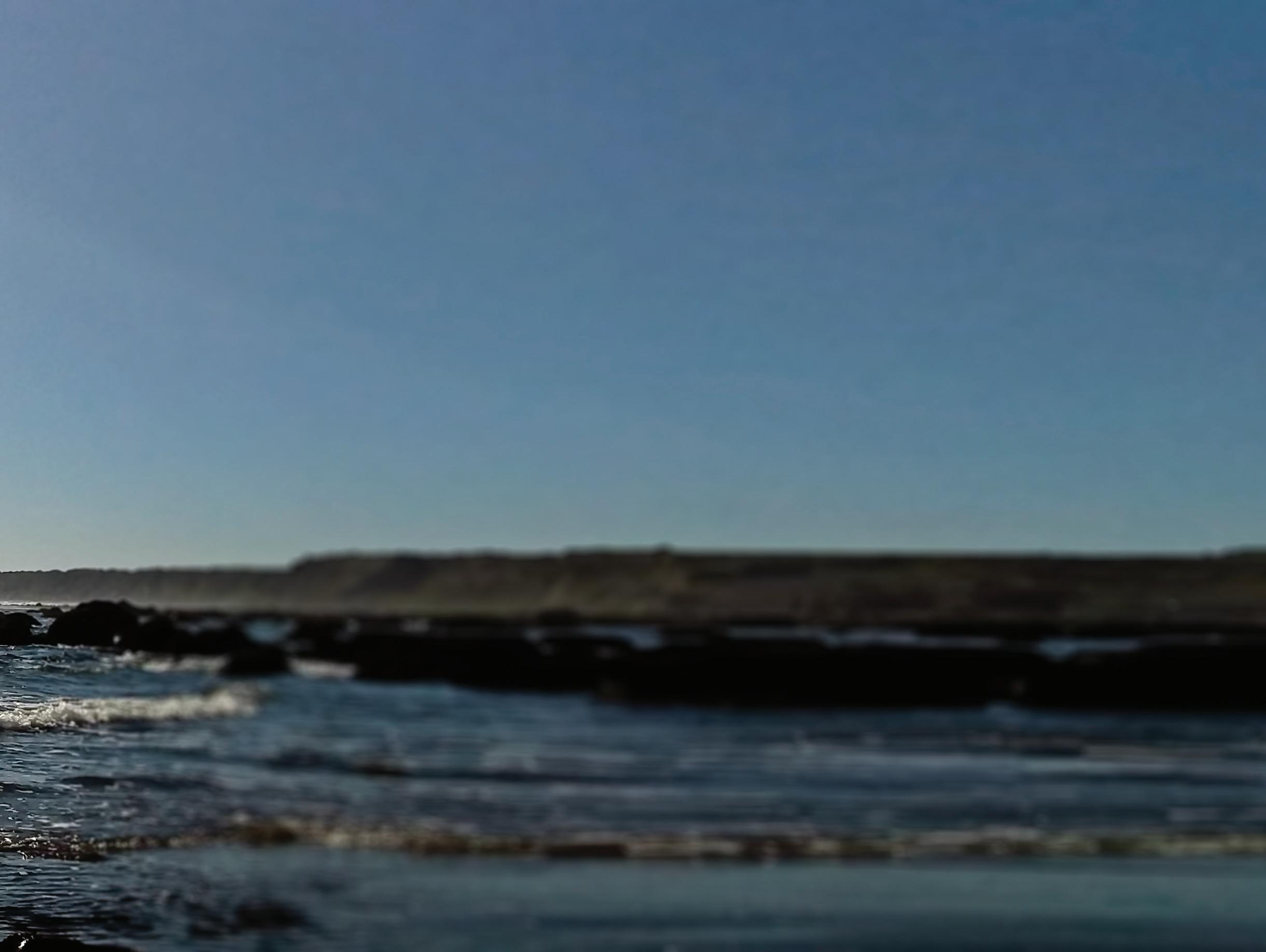
9 minute read
From the mountain to the sea, SH45 skirts around the mountain into some of Taranaki’s most gnarly beaten up coasts.
Welcome to Surf Highway 45, New Zealand’s wild boulderstrewn coast with imposing cliffs jutting out from the land and into the surf, and wild westerly winds throwing up swells from around the latitude and heaving tides against our shores.
Taranaki has never been known for its postcard beaches and swimming can sometimes be an arduous task. But behind every boulder, river mouth and cove is another stretch of adventure to go and immerse yourself in.
Advertisement
How wild is it? Think shipwrecks, gales, and crumbling cliffs. It’s not pretty, but the ever-changing face of the beaches and what it stirs up with the ebb and flow of the daily tides always leaves you wondering what is in store for next time.
Surfcasting adventures always begin by adequate planning. Make sure you have all the right fishing gear and plenty of spares, just in case your sinkers become rockpool fodder. Always take a coat; after many years of thinking, “Gee it’s hot, I’ll just shoot on down in my shorts and shirt,” most times I get to the beach and there is a steady gale whipping a cool sea breeze that sandblasts my body and dampens any aspirations for the trip. Always do reconnaissance ahead of time by going for a drive and perching yourself on the cliffs at low tide to study the reefs, channels and position you need to be in when you are down at sea level.
I would now like to introduce you to Kaupokonui beach; a well-loved fishing and swimming beach that has a family history of fish hauling. My grandparents used to caretake at this beach and the stories of all the adventures still come alive when heading out around the coast.

They maintained the buildings, ran the shop and camping office, and every chance he could Grandad would shoot off for a fish that built up a repertoire of stories to pass on. In his youth, fishing rods had not been invented and Grandad had to make do with a handline. It is hard to imagine blokes at the reef edges throwing in a line spooled around their hands and hauling in snapper. Several years later they developed cables and pulleys to run rigs straight from the cliff tops and down into the surf. It was a successful and labour-saving method, but as soon as rods and reels were introduced Grandad was seen up and down that coast showing off this latest invention.
In his youth, my father fought an enormous stingray for hours up and down a few kilometres of beach. He finally won the battle and hauled it in! Many family members have great stories about the adventures each bay brought and some of the fondest memories include my first taste of hooking kahawai in my youth and venturing further afield to surfcast around the coast.
Today I’m heading out to catch some bait; a family tradition and besides, buying bait is overrated right? I will be targeting snapper and spotty shark later, so when it is low tide our family head down to Ohawe beach to rustle up some crabs for our bait bag. As we walk to a good rocky reef, we hear the clitter clatter of wary crustaceans on alert as they dart down from their meerkat-like perches. The hunters start chasing them down, spearing between rocks and pulling out the big mamas with nasty-looking chompers. Kids love this activity and helping to spot and chase the crabs. It is even funnier when the crabs and other creatures that you uncover from the rockpools start chasing them. With our bait bag loaded with crabs, we head off to collect seaweed for the garden on the way back.
Tip: Fresh crab makes the best bait but make sure to dice into nice portions for the hook should they need freezing.
Planning our fishing day is all about the weather; early mornings or late evenings are best since the daytime sea breezes can chop up the waters along the coast very fast. A slight northerly and low swell is spotted so I arrive at mid-incoming tide.
Gurnard catch.

The surfcasting waiting game!

Along with a surf cast rod, I will always bring a spinning rod for the mouths where kahawai regularly run. It also gives you an extra something to do if you surf cast the river mouths as well. After looking over the cliff tops, I spot a deep sandy channel to cast in between rocky outcrops. However, by the time I get there the sea starts getting rough literally as I am about to cast, and I watch as my line starts dragging with the increasing swell. I head back to the mouth to spin but nothing is hooked by me or anyone else.
A few days pass and a mate and I catch up for an evening fish before sundown, heading back to a similar spot. The sea is sitting much calmer and as the sun starts to set the activity picks up, with a few bites and rapid attacks on the line. However, just like the visit before, nothing is hanging around to be hooked for dinner. Paddle crabs can make quick work on your bait depending on how you have rigged it, so I advise people to pull the line in regularly.
Days spent along the coast can be fun rummaging around the rocks for fishermen’s high tide snags, as misfortunes replenish sinkers, hooks and lures very fast. It is also fascinating to discover treasures such as pocketknives, forgotten rods and jackets, washed up creatures from the deep, as well as the odd whale. Another fossicking pastime is searching the new slips for intricate fossils preserved under the layers of papa and ash along the wild West Coast. Even the layers of soil are interesting to dissect as ancient tree roots and ashy sediment has piled up over time, only to be ripped back into the sea.


Getting the kids acquainted with dinner. Fillets for some flames.

A new approach to combat the crabs pinching my bait is to change to squid and run a longer rig, to get that bait higher in the water. Along the South Taranaki coast, you will find all types of old infrastructure. For example, you can still climb into an old concrete turret which was constructed during World War II to fend off any Japanese invasion. These abandoned derelicts stay well preserved tucked in the sand and tussock. The odd ships even found themselves beached and dismantled by the force of the weather and signs of the old wrecks can still be discovered today from land or by diving in the sea. Many stories can be found in the history books or by talking to locals whose families have lived around the coast for generations.
With squid now on the menu, we head out just after low tide to get a good look at the obstacles so we can plan around them. Kayakers utilise the great fishing that is just out of reach and always manage a great haul of snapper, when the swells allow for it. Boaties also launch in a few utilised spots but it can be quite ‘hit and miss’ with the weather when trying to plan these trips.
Our lines now have more length to reach the firmer squid perched up above the crabs. With gentle waves crashing on the disappearing sandbars and reefs, we set up camp and wait for the action to begin. Early morning dawns a cooler and slightly overcast day, and I am fortunate that the cards are finally lining up as too much light can keep the fish out deep.
Fresh water is on tap with the spring that is running down the cliff face behind us making for an enjoyable morning, especially if your drink bottle has been left behind in the car!



The bait is on the run!
Fossils galore; great to hunt for with kids.

Low light and setting sun is the perfect combo.
First lines are hauled in after some sudden tugs and the bait is holding up well. Now it is just a waiting game and 30 minutes later the first screaming reel of the day takes, and a tug of war begins. With the large mussel rocks scattered below the surf, I guide my catch in true and straight otherwise I will risk line damage. A nice weighted snapper meal is secured, and I can add one to my day’s tally. The re-rigged line is fired out again into the encroaching tide and the pressure is off to score for today, as we wait for another take.
The bites die off but with one last attempt, something once again comes back for a nibble. The reel takes off and brings back a memory of once having my line out at sea when I didn’t untension the reel spool. When a feisty kahawai took hold a clatter of noise alerted me to a rod holder without a rod, as the fish cruised along the sand and out into the surf. I was lucky to catch the kahawai and save my fishing rod that day!
We ended the morning with hauling in a gurnard, our mission of getting something for the dinnerplate finally achieved. The bites faded and the swell picked up as the coastal wind gained strength, so after a quick flick at the nearby river mouth for a kahawai, we headed home.
Coastal turret built to fight off any invasion.

A few days later, we took the family for a swim at a local beach and a pod of orcas were spotted darting about the waves. Their impressive fins circled around the rocky reef edges as they slowly made their way westward around the coast. Other creatures that visit the coast are seals and the odd salmon has even been caught shooting up the ring plain rivers from the ocean.
The West Coast sea is always truly alive with fish and sea creatures and history continues to be created as erosion keeps changing the cliff faces and the tides wash treasures onto the beaches.
Surf Highway 45 is a canvas of ever-changing portraits crafted by our ocean.<<<
Pod of orcas off the South Taranaki coast.
A good heave helps the line fire away.






